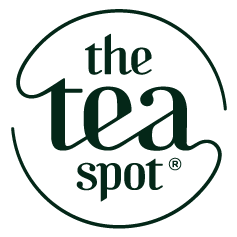
Adaptogens are botanical substances that balance, restore and protect the body from stress. [1] Their forte is in their ability to create what’s called a “non-specific” response to different types of stress. These can be many different types of stresses: mental, physical or biochemical in nature. If the stress your body encounters tends to spin you up, the adaptogenic response will help keep you grounded. Conversely, if the stressor brings the body down, the adaptogen’s effect would be to provide a lift.
Adaptogens work on regulating the adrenal glands, which is where stress hormones are produced. This is the key to how they help maintain energy, reduce stress fatigue, and keep us centered. Stress response unrolls in three distinct phases: alarm, resistance, and finally, exhaustion. The phase which adaptogens assist with is the resistance phase. They don’t affect the body’s alarm to an incoming stress. What they do is mitigate the body’s response to stress by providing support in the resistance phase, thus making it less likely to get to the exhaustion phase.
About a quarter of adults in the U.S. are seeking to maintain wellness and/or manage a health condition through their diet. But plant therapy (“phytotherapy”) is nothing new. The roots of the most enduring and respected traditional medicine cultures all use plant-based foods as medicine. Adaptogenic teas are also not new, but the definition is. The term was first coined by a Soviet scientist looking to develop an all-natural performance tonic for fighter pilots during the cold war, but adaptogens have been commonly used in Chinese, Indian, and nordic cultures for centuries.
Today’s environment and recent research are bringing adaptogenic teas into the spotlight. Many of us are looking for natural ways to reduce stress, provide a sense of calm, and bring our stress hormones back into balance. Although they can be either synthetic or natural, the research focus for adaptogens has been on plants or “phytoadaptogens.” In order to qualify as an adaptogen, three criteria need to be met [2]:
- Their response is non-specific
- They bring a dysfunctioning body back into balance
- They must be innocuous, that is to say, must not influence other body functions
Adaptogens are further classed as either primary or secondary. [3] Primary adaptogens directly affect hormone expression from the adrenal and pituitary glands, whereas secondary adaptogens’ balancing effects emerge through the immune and nervous systems. Tea (Camellia sinensis) is a secondary adaptogen and the most consumed of all adaptogens. Tea drinkers are familiar with the normalizing effects of tea, which can be primarily attributed to its polyphenols’ effects on the immune system, as well as the balancing effect of the amino acid L-Theanine. [4]
REFERENCES:
[1] H. Wagner, et al. Plant Adaptogens. Phytomedicine. Volume 1, Issue 1, June 1994, Pages 63-76.
[2] Brehkman and Dardymov, New Substances of Plant Origin which Increase Nonspecific Resistance. Annual Review of Pharmacology Vol. 9:419-430 (Volume publication date April 1969
[3] Lian-ying Liao, et al. A preliminary review of studies on adaptogens: comparison of their bioactivity in TCM with that of ginseng-like herbs used worldwide. Chinese Medicine 2018; 13: 57.
[4] Charles Okechukwu Esimone et al. Adaptogenic potentials of Camellia sinensis leaves, Garcinia kola and Kola nitida seeds. Scientific research and essays · August 2007

Adaptogens are powerful!